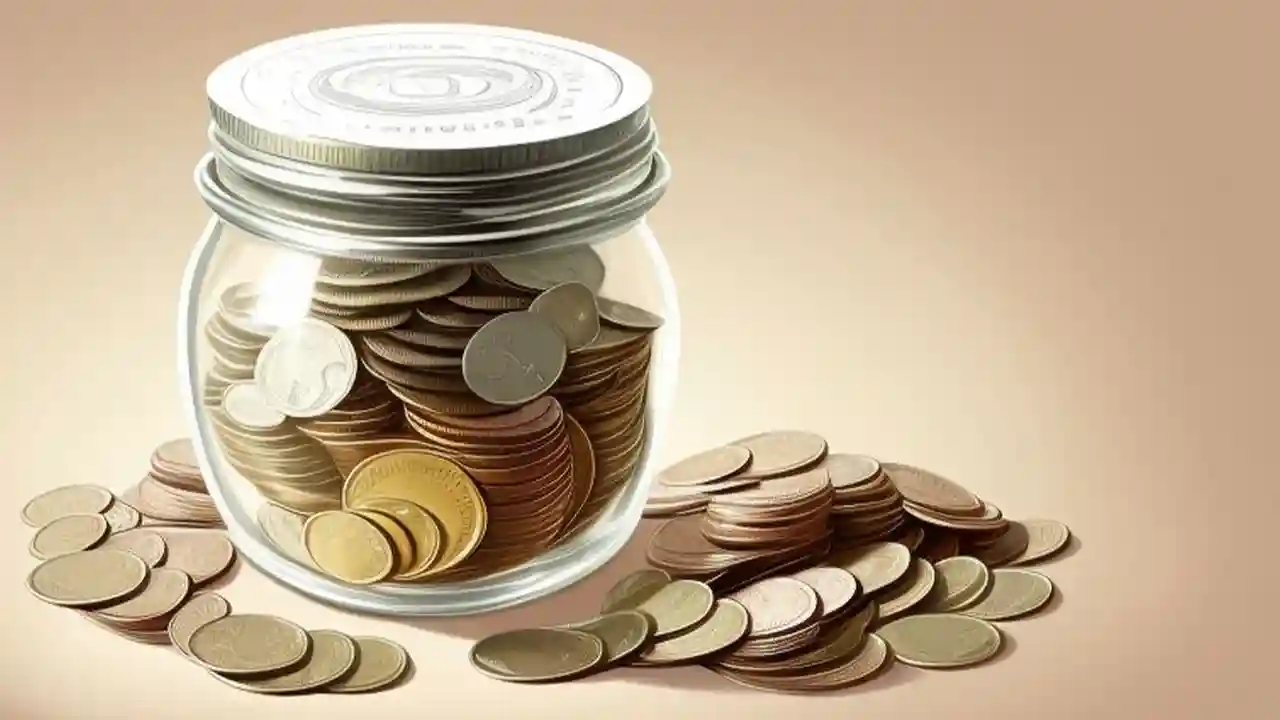Mortgagerateslocal.com – Saving money is a smart habit that can help you achieve your financial goals, whether it’s buying a house, paying off debt, or funding your retirement. But where should you keep your savings? If you’re looking for a safe and easy way to earn more interest on your money, you might want to consider opening a high yield interest savings account.
A high yield interest savings account is a type of bank account that pays a higher interest rate than a regular savings account. Unlike other investments, such as stocks or bonds, a high yield interest savings account is insured by the Federal Deposit Insurance Corporation (FDIC) up to $250,000 per depositor, per institution.
This means that your money is protected even if the bank fails. But how much more interest can you earn with a high yield interest savings account? And what are the benefits and drawbacks of using one?
We will share with you some of the best high yield interest savings accounts available in the market today. By the end of this article, you will have a better idea of how to choose the best high yield interest savings account for your needs and goals.
What is a High Yield Interest Savings Account?
A high yield interest savings account is a bank account that pays a higher interest rate than the national average for savings accounts. According to the FDIC, as of December 13, 2021, the national average interest rate for savings accounts was 0.06% APY (annual percentage yield).
This means that if you deposit $10,000 in a regular savings account, you will earn only $6 in interest after one year. A high yield interest savings account, on the other hand, can pay up to 20 times more interest than a regular savings account.
For example, as of December the highest interest rate for a high yield interest savings account was 1.25% APY, offered by Vio Bank. This means that if you deposit $10,000 in this account, you will earn $125 in interest after one year. That’s a difference of $119, or almost 2,000%, compared to a regular savings account.
Why Should You Use a High Yield Interest Savings Account?
There are many reasons why you should use a high yield interest savings account to store your savings. Here are some of the main benefits:
- You can earn more money without taking any risk. A high yield interest savings account is one of the safest ways to grow your money, as it is insured by the FDIC up to $250,000 per depositor, per institution. You don’t have to worry about losing your principal or interest, unlike other investments that may fluctuate in value or even become worthless. You also don’t have to worry about fees or commissions that may eat into your returns, as most high yield interest savings accounts have no monthly fees or minimum balance requirements.
- You can access your money anytime you need it. A high yield interest savings account is a liquid asset, which means that you can withdraw your money anytime you need it, without paying any penalties or fees. This makes it ideal for saving for short-term or emergency goals, such as an unexpected car repair, a medical bill, or a vacation. You can also use it as a buffer for your checking account, to avoid overdraft fees or bounced checks. Most high yield interest savings accounts allow you to make up to six withdrawals or transfers per month, as per the federal regulation known as Regulation D. Some accounts may even offer unlimited withdrawals or transfers, depending on the bank and the type of account.
- You can beat inflation and preserve your purchasing power. Inflation is the general increase in the prices of goods and services over time, which reduces the value of your money. According to the Bureau of Labor Statistics, as of November 2021, the annual inflation rate in the United States was 6.8%, the highest since 1982. This means that the prices of things you buy have increased by 6.8% in the past year, and your money can buy 6.8% less than it could a year ago. If you keep your money in a regular savings account that pays 0.06% APY, you are actually losing money in real terms, as your interest rate is lower than the inflation rate. A high yield interest savings account, on the other hand, can help you beat inflation and preserve your purchasing power, as it pays a higher interest rate than the inflation rate. For example, if you keep your money in a high yield interest savings account that pays 1.25% APY, you are actually earning 1.25% – 6.8% = -5.55% in real terms, which is better than -6.74%, the real return of a regular savings account.
What are the Drawbacks of Using a High Yield Interest Savings Account?
While a high yield interest savings account has many advantages, it also has some drawbacks that you should be aware of. Here are some of the main disadvantages:
- You may have to deal with online banking. Most high yield interest savings accounts are offered by online-only banks, which means that you may not have access to physical branches or ATMs. This can be inconvenient if you prefer to bank in person, or if you need to deposit or withdraw cash frequently. You may also have to deal with some technical issues, such as slow website loading, glitches, or security breaches. However, online banking also has some benefits, such as lower overhead costs, which allow online banks to offer higher interest rates and lower fees. Online banking is also more convenient and accessible, as you can bank anytime and anywhere, as long as you have an internet connection and a device. Online banks also offer customer service via phone, email, or chat, which can be helpful if you have any questions or problems.
- You may have to meet some requirements or limitations. Some high yield interest savings accounts may have some requirements or limitations that you have to meet or follow, such as opening an account with a certain amount of money, maintaining a minimum balance, linking a checking account, or making a certain number of transactions per month. These requirements or limitations may vary depending on the bank and the type of account. If you fail to meet or follow them, you may lose your high interest rate, or incur some fees or penalties. Therefore, you should read the fine print carefully before opening a high yield interest savings account, and make sure that you can meet or follow the requirements or limitations without any difficulty.
- You may have to deal with variable interest rates. Unlike other investments, such as certificates of deposit (CDs) or bonds, which offer fixed interest rates for a certain period of time, high yield interest savings accounts offer variable interest rates, which can change at any time, depending on the market conditions and the bank’s discretion. This means that your interest rate may go up or down, without any notice or explanation. This can be frustrating if you are expecting a certain amount of interest, or if you are comparing different accounts based on their interest rates. However, variable interest rates also have some benefits, such as allowing you to take advantage of rising interest rates, or allowing you to switch to a better account without paying any penalties or fees.
How to Choose the Best High Yield Interest Savings Account?
Now that you know what a high yield interest savings account is, and what are its pros and cons, you may be wondering how to choose the best one for your needs and goals. There are many factors that you should consider when comparing different high yield interest savings accounts, such as:
- Interest rate. This is the most obvious and important factor, as it determines how much money you can earn with your account. You should look for the highest interest rate possible, but also keep in mind that interest rates are variable and can change at any time. You should also check how often the interest is compounded, which means how often the interest is added to your principal. The more frequently the interest is compounded, the more money you can earn, as you will earn interest on interest. The best compounding frequency is daily, followed by monthly, quarterly, and annually.
- Fees. This is another important factor, as it determines how much money you can keep with your account. You should look for an account that has no or low fees, such as monthly maintenance fees, minimum balance fees, excess transaction fees, or ATM fees. You should also check if the account offers any fee waivers or reimbursements, such as waiving the monthly fee if you maintain a certain balance, or reimbursing the ATM fees charged by other banks. You should also check if the account charges any fees for opening, closing, or transferring your account, or for receiving paper statements or checks.
- Features. This is a less obvious but still important factor, as it determines how convenient and easy it is to use your account. You should look for an account that has features that suit your preferences and needs, such as online and mobile banking, direct deposit, bill pay, mobile check deposit, electronic statements, alerts, and notifications. You should also check if the account offers any perks or rewards, such as cash back, bonuses, or loyalty programs. You should also check if the account is compatible with other financial tools or platforms, such as budgeting apps, robo-advisors, or peer-to-peer payment services.
- Customer service. This is a subjective but still important factor, as it determines how satisfied and comfortable you are with your account. You should look for an account that has a customer service that meets your expectations and needs, such as availability, responsiveness, friendliness, and professionalism. You should look for an account that offers customer service via various channels, such as phone, email, chat, or social media. You should also check if the account has a good reputation and reviews from other customers, as well as a high rating from the Better Business Bureau (BBB).
What are the Best High Yield Interest Savings Accounts?
There are many high yield interest savings accounts available in the market today, but not all of them are created equal. To help you narrow down your choices, we have compiled a list of some of the best high yield interest savings accounts.
We have considered the factors mentioned above, such as interest rate, fees, features, and customer service, as well as other criteria, such as minimum deposit, maximum balance, and eligibility requirements. Here are our top picks:
1. Vio Bank High Yield Online Savings Account
- Interest rate: 1.25% APY
- Minimum deposit: $100
- Maximum balance: None
- Fees: None
- Features: Online and mobile banking, direct deposit, electronic statements, alerts, and notifications
- Customer service: Phone and email
- Eligibility: U.S. citizens and residents, 18 years or older, with a valid Social Security number and a physical U.S. address
Vio Bank is an online-only division of MidFirst Bank, a privately owned bank based in Oklahoma. It offers one of the highest interest rates for a high yield interest savings account, with no monthly fees or minimum balance requirements.
It also has a low minimum deposit of $100, and no maximum balance limit. However, it has some drawbacks, such as limited features, such as no bill pay, mobile check deposit, or ATM access, and limited customer service, such as no chat or social media support.
2. Ally Bank Online Savings Account
- Interest rate: 0.50% APY
- Minimum deposit: None
- Maximum balance: None
- Fees: None
- Features: Online and mobile banking, direct deposit, bill pay, mobile check deposit, electronic statements, alerts, and notifications, unlimited withdrawals and transfers, cash back rewards, and loyalty bonuses
- Customer service: Phone, email, chat, and social media
- Eligibility: U.S. citizens and residents, 18 years or older, with a valid Social Security number and a physical U.S. address
Ally Bank is one of the most popular and trusted online-only banks in the United States. It offers a competitive interest rate for a high yield interest savings account, with no monthly fees, minimum deposit, or maximum balance.
It also has a lot of features, such as unlimited withdrawals and transfers, cash back rewards, and loyalty bonuses. It also has a great customer service, with various channels and a high rating from the BBB. However, it has some drawbacks, such as no ATM access or reimbursement, and no physical branches.
3. Capital One 360 Performance Savings Account
- Interest rate: 0.40% APY
- Minimum deposit: None
- Maximum balance: None
- Fees: None
- Features: Online and mobile banking, direct deposit, bill pay, mobile check deposit, electronic statements, alerts, and notifications, unlimited withdrawals and transfers, and ATM access and reimbursement
- Customer service: Phone, email, chat, and social media
- Eligibility: U.S. citizens and residents, 18 years or older, with a valid Social Security number and a physical U.S. address
Capital One is one of the largest and most reputable banks in the United States, with both online and physical presence. It offers a decent interest rate for a high yield interest savings account, with no monthly fees, minimum deposit, or maximum balance.
It also has a lot of features, such as unlimited withdrawals and transfers, and ATM access and reimbursement. It also has a good customer service, with various channels and a high rating from the BBB. However, it has some drawbacks, such as no cash back rewards or loyalty bonuses, and no physical branches for the online division.
Conclusion
A high yield interest savings account is a great way to save money and earn more interest, without taking any risk or losing any access. However, not all high yield interest savings accounts are the same, and you should compare different accounts based on various factors, such as interest rate, fees, features, and customer service.
We have provided you with some of the best high yield interest savings accounts available in the market today, but you should do your own research and find the best account for your needs and goals. Remember, saving money is not enough, you also need to grow your money faster.




